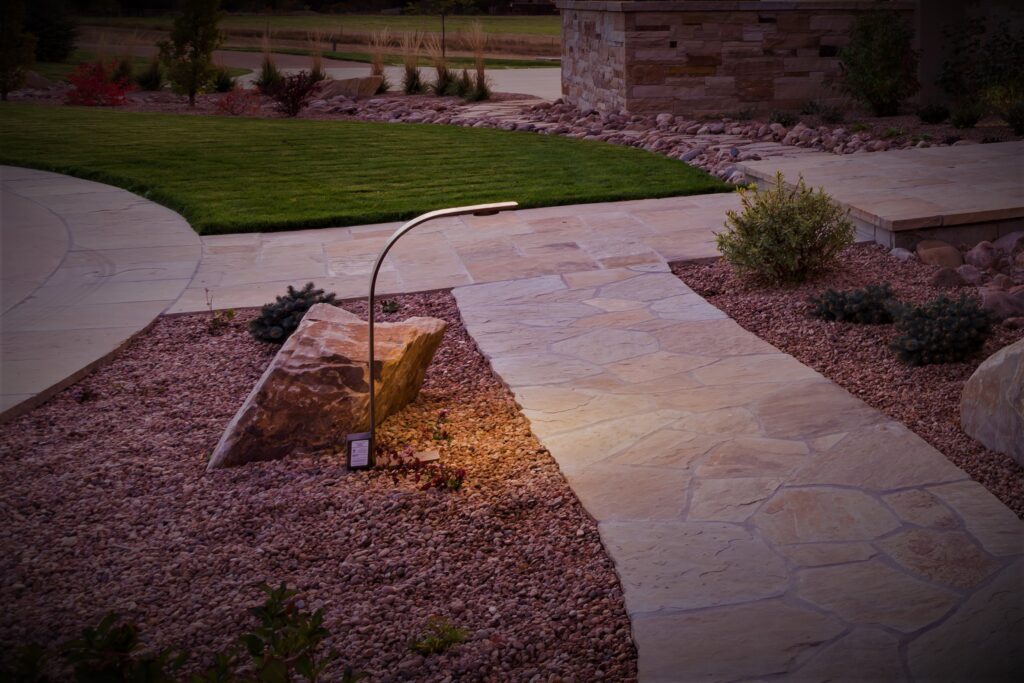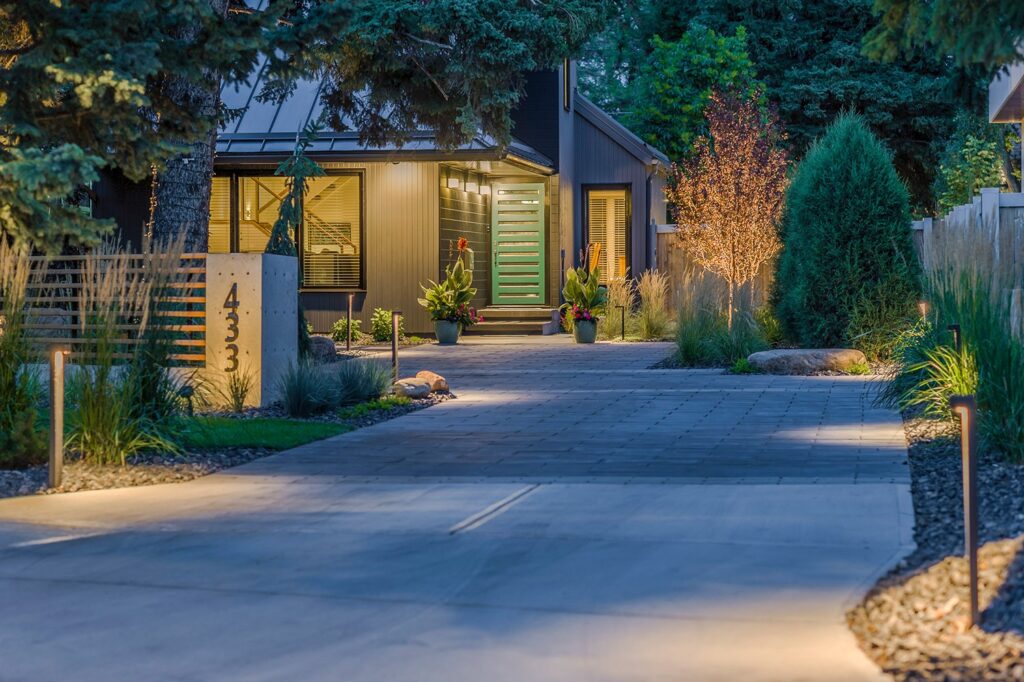November 2023 | Native Edge Landscapes
Outdoor lighting for your home and landscape not only enhances the value of your property and expands your nighttime living space, but it also accents key features of your home to be enjoyed and appreciated day or night. And in many cases, the most important benefit can be the added security that comes with appropriately lit spaces.

LIGHTING ACCENT AREAS
SOME OF THE BEST AREAS TO ADD LITTLE LIGHT INCLUDE….
- Trees
- Stone walls
- Ponds/water features
- Walkways & stairs
- Outdoor seating & living areas
- Special architectural details of your home
- Planting beds
- Landscape perimeters
TYPES OF LIGHT FIXTURES
There are a variety of types of lights that will feature your home in different ways.

PATH LIGHTS
Mounted in the ground, path lights generally reflect light downward and sideways into planting beds and enhance the textures. They often line and illuminate walkways, pathways or steps. When used on a pathway, these types of lights might be staggered, alternating from one side of the path to another.


UPLIGHTS
The most common technique used in outdoor lighting, uplighting creates shadows on the walls to accent key focal points and towering trees. The shadow enhances the design of the object, commonly a tree or other prominent feature. Uplighting dramatizes features through illumination from below.

WASH LIGHTS
Very similar to stage lighting, wash lights fill unlit spaces by brightening flat facades. They are a soft, diffused light used on garden walls and privacy fences or elegantly illuminating the front of a home. Wash lights project visual uniformity with light that is evenly distributed. The idea is to eliminate highlights and shadows and make the highlighted features feel more grand.

BULLET LIGHTS
Traditionally resembling a bullet, these lights have a more direct, narrow beam. Very versatile, they’re used for lighting trees, home accent features and other garden structures. There is a wide variety of styles, beam widths and lumen output with bullet lights, which gives quite a few more options when designing landscape lighting.

WELL LIGHTS
Well lights are hidden and buried in the ground. They are used to illuminate the underside of foliage, architectural elements and interesting textures. The benefit of well lights is the absence of seeing a fixture, ensuring the focus is on the light itself. Having a smaller profile allows the feature to be discreet. Architectural columns and flag poles are also commonly lit by well lights.
DOWNLIGHTS & MOONLIGHTING

Downlights are just like they sound: they are aimed down from a higher vantage point. The shape of the casing reduces the side glare as it points down through foliage, lights up paths, or illuminates lawns. Downlighting is also known as moonlighting as it resembles moonlight coming in through leaves and branches. Downlights can also be placed under the eaves of houses as well as on trees. Even though they can be used in conjunction with traditional path lights, sometimes it can be more logical to light from above, especially if the home houses energetic pets or children who enjoy rambling outside.
One of the more common questions about downlights is, “Will it damage the tree?” If installed properly on mature trees using zip ties or stainless steel hardware, the tree will be fine.

SUBMERSIBLE LIGHTS
Water features can dramatically enhance the design of a landscape. When lit properly the effect will be enhanced, especially when using cool white LED lamps. The reflection of the water will twinkle and any fish will be illuminated.

STEP LIGHTS
These types of lights are very practical but can be implemented in a subtle, stylistic way. Step lights are mainly designed for safety, lighting up steps in your landscape and creating an easier path to walk along.

LED ADVANTAGES
LED lights are absolutely the lights of the future. They are more energy efficient, have a much longer life span, produce significantly less heat and have consistency in light output. Many LED lights feature heat sinks or temperature sensors to ensure a fixture won’t overheat, making them safer than incandescent bulbs. They are a great addition to your outdoor lighting plan.
PROFESSIONAL OUTDOOR LIGHTING
Some of these systems can be implemented yourself but hiring a professional might be the right way to go. Certified professionals understand the needs of your landscape, how to light it, and most importantly, they will follow local ordinances. Proper lighting design and implementation of electrical codes will reduce the need for maintenance or adjustment.
To get more advice from a Native Edge professional, Get In Touch below!
Get In Touch
To schedule a consultation or request services please call 303-245-9166, send an email to information@nativeedgelandscapes.com or Get In Touch through our website. One of our Customer Care Representatives will be happy to help.

